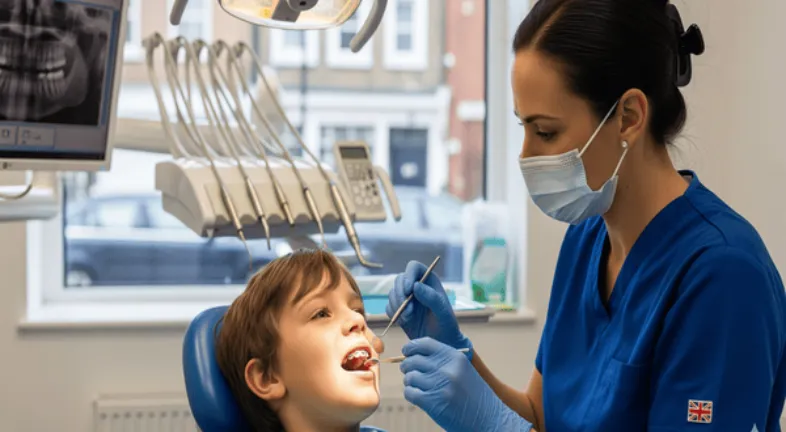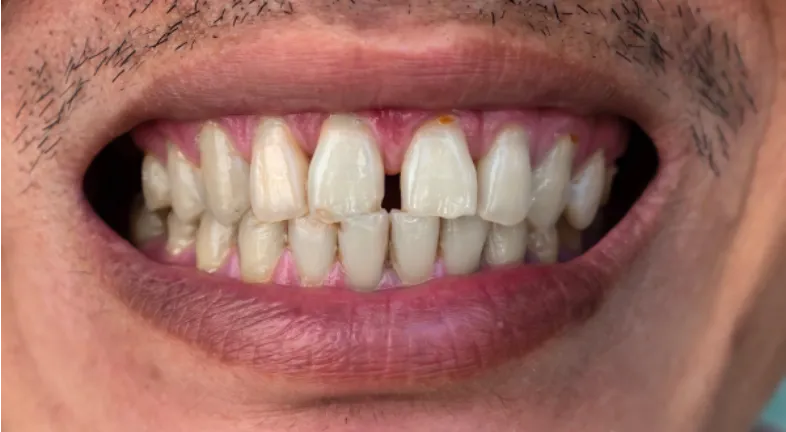
As parents, many of us want our children to grow up in the best of health. That’s not limited to just functional health, though. Rather, we want the best of “aesthetic health” for them as well. And a big part of it is a confident smile.
However, our teeth tend to dance to their own tune. And end up giving us a smile that we’re not too proud to show. Hence, many parents wish to learn about child braces or other early treatments that can resolve any misalignment issues before the jaw matures.
Now, the predicament parents face is completely understandable. To help them out, we’re exploring when kids should get braces, the common children’s teeth alignment issues, and the benefits of early orthodontic treatment.
First, let’s address when should kids get braces.
You see, some children’s teeth alignment issues are quite visible. You can clearly see the problem, hence it’s clear they need treatment. But sometimes, the issues are not so visible, but can lead to more severe misalignment as the jaw matures.
So, ensure you catch the problem right at the start. Here are some early signs a child needs braces.
Now, if you’re vigilant and see some of these signs, do consult a dentist without delay. They let you know the best orthodontic treatment for kids in the UK. However, many parents are not comfortable with the idea of braces. They are hard to manage, require several visits to the dentist’s office, and come with many food restrictions. Plus, they are quite costly.
In this case, you can try clear aligners. Especially the at-home options like Caspersmile or Smile White. They are discreet, very easy to manage, give you full control of the treatment, and are way more affordable. Here’s more on clear aligners if you wish to explore.
Besides the issues that need to be treated, parents are also concerned about the right age of starting a teeth straightening process. Most ask for the braces age recommendation in the UK.
According to the NHS, an orthodontic treatment is usually only started after most of a child's adult teeth have started to come through . And that means between the ages of 11 and 13. However, the green signal for orthodontic treatments for kids in the UK also depends on how many adult teeth have come through, the growth of their face and jaws, and the level of their oral hygiene.
That is why early assessments are necessary. They help orthodontists plan for the future, ensuring treatment is timed at the most effective stage of growth.
We’ve discussed the when. Now, let’s explore the why.
Here’s a comprehensive breakdown of the benefits of early orthodontic treatment for kids in the UK.
Many parents in the UK find that investing in early treatment saves both time and money in the long run.
If you’ve noticed early signs of misalignment in your child’s teeth, the first thing you should do is book a consultation with a dentist or orthodontist. In the UK, orthodontic treatment for kids can be available through the NHS if the issues are classified as severe enough under the Index of Orthodontic Treatment Need (IOTN).
That said, if the issue is mild or moderate, or it’s just a cosmetic improvement, a private treatment might be a better option. NHS might not cover it, or even if it does, the waiting time might be quite long. In contrast, treatments like at home clear aligners are faster and more flexible.
Here’s a detailed comparison between braces and invisible aligners to give you a better idea.
The first step is an early orthodontic assessment for child braces. Here, a dentist or orthodontist will take a look at the condition of your child’s teeth and recommend a treatment based on that. That is only if there’s a need for a treatment.
An early orthodontic assessment usually involves:
With this proactive step, parents can have peace of mind and a clear plan for managing their child’s dental health.
This is quite important. You see, children are not always enthusiastic about orthodontic treatments. We, as adults, might understand the need, but kids are usually scared of the process.
That’s why you have to encourage them as a parent. Talk to them about how healthier smiles can impact them positively. Explain the issues to them. And stay calm while doing so. Forcing them to do something won’t cut it. Moreover, you can also personalize braces to add a little fun element. Or, you can go for clear aligners since they aren’t intimidating at all.
Here’s all on how to know if your child needs braces early on in the UK. While misalignment might start showing up early, the braces age recommendation in the UK typically falls between 11 and 13 years. However, do consult a dentist early on to know what treatment to go for and when.
Besides that, here are 7 more ways to improve your child's dental health .
In a nutshell, don’t neglect children’s teeth aligment issues. With early treatment, you save your kids from much thorough and costly treatments later on.




Curated the best for your knowledge
 Gaps after Aligners: Causes, Prevention & Fixes
Gaps after Aligners: Causes, Prevention & FixesA perfectly aligned, radiant smile is a dream for many. However, not everyone is born with it. Teeth straightening treatments have become pretty common to ensure a straighter smile that leaves a lasting impression. The procedures are effective and give you the smile you have always wanted.
Read More Aligners for Adults: The Modern Way to Straighten Your Smile
Aligners for Adults: The Modern Way to Straighten Your SmileIf you've ever concealed your smile in photos or refrained from laughing heartily due to misaligned teeth, you are not alone. Many individuals, including mature adults, share this sentiment. Fortunately, you no longer require a mouth full of metal to achieve the smile you have always desired. Today's aligners for adults are slimmer, subtler, and much more effective than ever before. Teeth straightening has become a discreet and adaptable option. These clear trays will slowly shift your teeth from behind the scenes while you continue to live your life as usual. Let's take a look at how teeth straightening for adults works, why it has become so trendy, and which brands, including Invisalign, Caspersmile, and Smile White, are worth considering if you are based in the UK.
Read More Mouth Guards: Types & How They Protect Your Teeth
Mouth Guards: Types & How They Protect Your TeethPeople don’t always think about how easy it is to damage a tooth. One wrong move in a football game, a trip on the pavement, or even just grinding in your sleep, and boom, chipped enamel or worse, a full-on dental emergency. Teeth look solid, but they’re actually pretty fragile when it comes down to it. That’s where a mouth guard comes in. It’s basically a cover for your teeth. Easiest way to picture it? Like a helmet, but for your mouth. It takes the hit, spreads the pressure out, and stops your teeth from smashing against each other. Super simple, but it really does make a huge difference. And no, there isn’t just one kind. You’ve got the cheap store-bought ones, the boil-and-bite kind you mold at home, and then the dentist-made custom ones that fit perfectly. Each has its ups and downs, and we’ll go through them so you know which might actually work for you.
Read MoreQuick Links

Heading